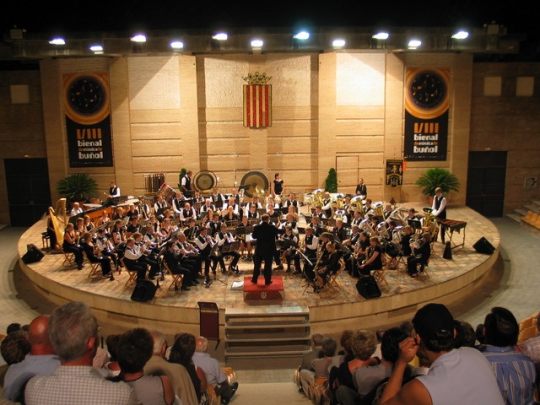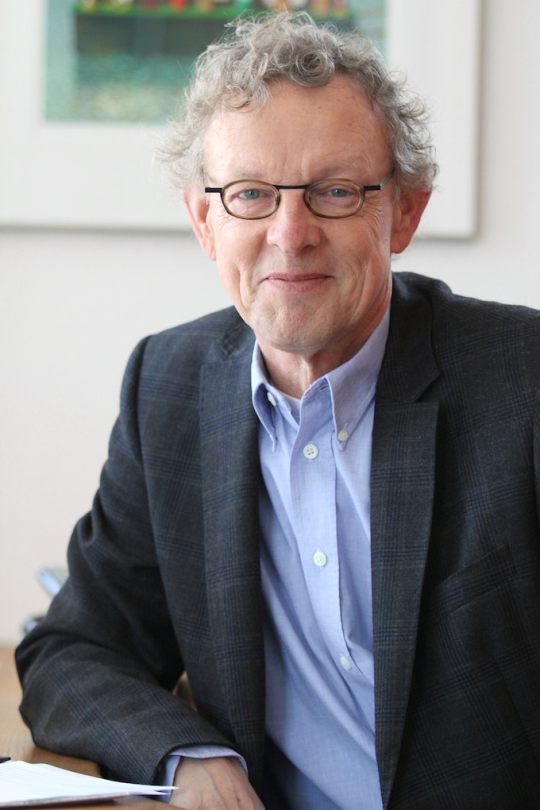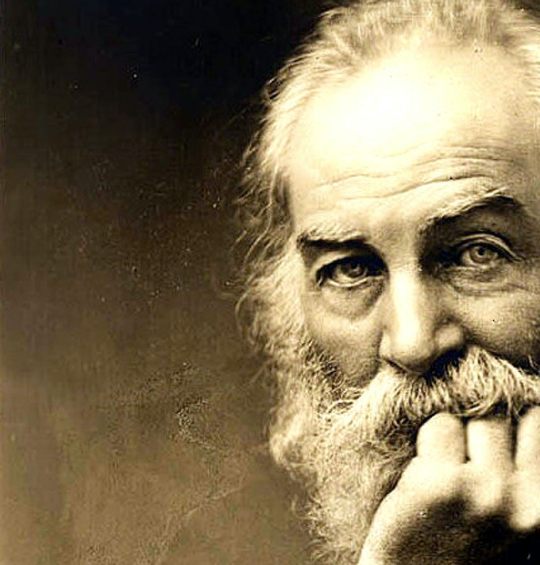#malcom martineau
Explore tagged Tumblr posts
Text
youtube
Constant Lambert (1905-1951) - Eight poems by Li-Po, Nocturne ·
Yvonne Kenny, soprano & Malcom Martineau, piano
3 notes
·
View notes
Photo




[エリーナ・ガランチャ歌曲の夕べ]
本日は、今年の「歌曲の夕べ」2夜め。メゾソプラノのエリーナ・ガランチャである。
今年は初盤からどちらかといえば渋め難解系のプログラムが続いたため、音楽祭というよりも、なんとなくカルチャーセンターでクラシック音楽の連続講座に通っているような気分になりかかっていたが、このクラスのスター歌手が舞台に上がるようになると、いよいよ、ザルツブルク音楽祭に来た、という実感がじわじわ湧いてくる。
さて、ガランチャ姫、本日のリサイタルのテーマは「愛の歌」。 ブラームス、アンリ・デュパルク、そしてラフマニノフという不思議な取り合わせだが、共通項は、ラブソングだけをセレクトすることでしっかり仕込んである。
まずは、ブラームスのドイツ歌曲で幕を開けた本日の演奏会。1夜めのゲルハーハーと比べると、それほど感情移入のない、どちらかといえば抑制の効いた、淡々としたアプローチだ。しかし、何よりすごいのは、ガランチャのオーラ感。舞台に立つだけで、もう女王としての貫禄がまばゆい光線となってビンビン伝わってくる。そして、さすがオペラ歌手なので、とても表現が豊かである。言葉に魂を込めるような歌い方ではないが、むしろ明快で、詩の意味を素直にわかりやすく聴き手に向かって投げてくる。
だが、本日の歌曲の夕べ、クライマックスは何と言っても後半だった。アンリ・デュパルクは、セザール・フランクの弟子として将来を期待された作曲家らしいが、プログラムによると、27歳の時に神経症にかかり、間もなく視力も失って、失意のうちにみずからほとんどの作品を破棄したのだという。フランス歌曲の世界では伝説的存在だというが、私にとってはあまり馴染みのない作品ばかりである。ましてやラフマニノフの歌曲にいたっては、聴いてみるまでちょっとイメージがわかなかった。
まず何よりさすが、と思ったのは、前半と後半で「お色直し」があったこと。前半、ブラームスを歌ったときの、袖とデコルテにキラキラとビジューをあしらった、ベージュと黒の切り替えのシックなフレアドレスを、後半は鮮やかなレッドに着替えてきた。もうこの赤のドレスが美しすぎて、登場した時に思わず息をのんだ。赤といっても真紅ではなく、どちらかといえばシルバーグレーのかかった、鈍い輝きを帯びた色で、その地色に、黒い線描でポピーのような花の模様があしらってある。よく見ると、指輪やイヤリングなど、ジュ���リーも全部変えている。これはまあ、予想はついたことかもしれないが、やはり改めてすごいと思った。歌曲やリートは、オペラに比べると地味でストイックなジャンルである。ここにどうやって演出的なものを入れていくかという時に、まあ、歌手自身がこうして衣装を替え、「変身」してしまうのが一番シンプルで、なおかつインパクトのある方法だろう。
そして、ガランチャ自身の歌の入り方も、後半の方がぐんぐん深くなってくる。プログラムを見た時、最初がドイツ・リートだったけれど、ガランチャはオペラを歌うとしても、どちらかといえばイタリアものやビゼーなど、ラテン系の作品の方がタイプなのではないかという考えが少しだけ頭をよぎった。そして、やはり、じっさい聞いてみると、ドイツ語よりもフランス語の方が、歌い手として精神的に近寄れている感じがするのだ。一語一語に情感を込めて、非常に演劇的に再現していく。別れの悲しみ、官能、愛の囁き。それぞれの短い作品の語り手が、ヒロインとなってそこにいる感じだ。
さらに、ラスト、ラフマニノフになると、歌詞がロシア語になるので、私には全く未知の世界に突入である。だが、ガランチャはラトヴィア出身で、じっさいの使用言語としては、ここが一番ぴったりくるところだろう。世界的なオペラスターなので、多くの言語をレパートリーのなかに持ってはい���も、やはり、深く入れる言語、より寄り添える言葉はあるだろう。そして、3人揃えた作曲家のなかで、出色は、明らかにこの最後8曲のラフマニノフだった。センチメンタルでロマンティックな曲想に合わせて、ガランチャは表情を変え、ポーズをつけながら歌い上げていく。ピアノと演奏者しかいない舞台が、ディーヴァの魔法の力で、グランドオペラに変身させられたかのような迫力であった。
エレーナ・ガランチャは、アンナ・ネトレプコと並んで、いま世界で最も熱い人気を誇る女性歌手である。ウィーンでもニューヨークでも、ガランチャが出演するオペラの舞台は、おそらくチケットが最難関であるはずだ。そのガランチャを、歌曲という、無駄なものを削ぎ落とした作品でじっくり味わうという機会に恵まれて、やはりその声の美しさ、歌の上手さに改めて魅了された。澄んだ曇りのない美しい声だが、か弱さと強さのコントロールが本当に見事である。そして何より、圧倒的な女王の貫禄。声を出すまでもなく、ピアノの序奏の部分を待つ間に3分の2くらいのプロフィールですっくと立つ姿、そして、歌い終わって伏し目がちになった時��表情の陰影。すべてのシーンが、何もかももう美しすぎて、全力で聴くだけでなく、もうただただ見入ってしまった。
もちろん、見た目が良ければいい、ということはまったくない。たとえ禿山の岩石みたいな見かけでも、歌がうまければそれでいい。とんでもない太った小男なのに、歌い始めたら前列かぶりつきのご婦人全員が悩殺状態だった、というような伝説のテノール?だって、私が知っているだけでも過去に複数存在する。その「化け力」の凄さはまた、「歌の魔力」の証明でもあるわけだ。しかし、しのごのは差し置いても、やはり地で行って美しければ、それに越したことはない。美しさは、どんな意味でもけっして批判の対象にはならないはずだ。歌よし、見た目よし、やはりすごい歌姫である。5年くらい前にウィーンのコンチェルトハウスでロッシーニ『スターバト・マーテル』を聴いたときは、カルティエの専属カメラマンにプログラムの写真を撮らせたことで話題になっていた。その時よりもさらに貫禄も深みも増したガランチャを、このタイミングで、このプログラムで、そしてこんなにもかぶりつきで聴けたことに、ただただ感謝したい。会場を出るときは、もうその気持ちしかなかった。
1 note
·
View note
Text
Cristoph Prégardien i Malcom Martineau Schubertíada de Vilabertran 26/8/2017 Foto IFL
Cristoph Prégardien i Malcom Martineau Schubertíada de Vilabertran 26/8/2017 Foto IFL
Cristoph Prégardien i Malcom Martineau Schubertíada de Vilabertran 26/8/2017 Foto IFL
El dissabte 26 d’agost després de la intensa experiència en la que ens van sotmetre el Quartet Casals i després d’un necessari descans per recomposar l’esperit, l’estomac i refrescar-nos una mica, els més agosarats ens varem sotmetre a una de les més grans experiències musicals que es poden viure en una sala de concerts, el Winterreise de Franz Schubert, en aquesta ocasió amb el tenor alemany Cristopf Prégardien (18 de gener de 1956 Limburg an der Lahn) i el pianista escocès Malcolm Martineau.
He manifestat més d’una vegada que en general Schubert i el Winterreise en particular, me’ls estimo més en la veu de baríton i per ser més precís, de baix-baríton, però hi ha vegades que un tenor em fa oblidar aquesta preferència i en aquesta ocasió es va tornar a repetir la meva “traïció” als principis volàtils ja que la interpretació va ser senzillament colpidora per la interiorització, naturalitat, personalitat pròpia, extrema musicalitat, control del’emissió, domini de tota l’extrema extensió del registre i una elegància en el fraseig que van fer de la seva personalíssima interpretació, una nova experiència en un cicle on semblava que poques coses noves es podien dir.
Prégardien primorosament acompanyat per un especialista com Martineau, va rec��rrer el transcendent viatge amb una intensitat admirable, dosificant les emocions i no caient mai en sentimentalismes sobrers o grandiloqüències melodramàtiques, ens explicaven aquest viatge emocional amb veritable sinceritat, perquè dominant tècnicament tots els paranys, podien viure i fer viure l’experiència amb naturalitat.
Detalls meravellosos de sensibilitat, graduacions sensorials d’impacte i el domini vocal necessari per imprimir la justa i no més, expressió de solitud va fer que des del “Gute Nacht” inicial fins el desolador “Der Leiermmann”, aquests dos grans artistes ens portessin sense oportunitat d’escapatòria possible, al més bell i inquietant viatge interior, fent que l’experiència fos realment musicalment sincera i emotivament transcendent.
El públic que omplia l’església de Santa Maria va premiar llarga i sorollosament la intensitat del que ens varen oferir i la Schubertíada de Vilabertran va demostrar que en ha assolit un nivell de maduresa en aquests 25 anys que es celebren enguany, que el situa com el festival més important que es fa a Catalunya, ja sigui per la seriositat de la proposta, com per la categoria dels intèrprets i la perfecta simbiosi entre el públic i els artistes, gràcies també al miraculós recolliment que s’acostuma aconseguir en un marc tan propens al recolliment i a la concentració.
Per celebrar aquests primer gloriosos 25 anys d’existència el Doctor Jaume Graells, en nom del patronat que dirigeix aquesta Schubertíada va rendir homenatge al Doctor Jordi Roch, fundador, ànima i essència del festival. Aquest va respondre amb l’habitual senzillesa i contundent certesa, animant a estimar la música i la poesia, vehicles imprescindibles per fer que aquesta iniciativa tingui la llarga vida que tots li desitgem.. L’enhorabona!
SCHUBERTÍADA DE VILABERTRAN 2017: WINTERREISE (PRÉGARDIEN-MARTINEAU) El dissabte 26 d'agost després de la intensa experiència en la que ens van sotmetre el Quartet Casals i després d'un necessari descans per recomposar l'esperit, l'estomac i refrescar-nos una mica, els més agosarats ens varem sotmetre a una de les més grans experiències musicals que es poden viure en una sala de concerts, el…
0 notes
Photo

Another Amazing Kickstarter ('A child said, what is the Grass' ..) has been published on http://crowdmonsters.com/new-kickstarters/a-child-said-what-is-the-grass/
A NEW KICKSTARTER IS LAUNCHED:
Backing this project is as easy as buying a track on iTunes, and the reward in return is also as easy as that, you will receive this unique track!
What are we up to? In The Netherlands one of leading fanfare orchestra’s has been inspired by the work of Walt Whitman and has dicided to assign one of Holland’s finest composers to write a new piece for soprano and band, based on Whitman’s poem, “A Child said, what is the grass“
The world première of this new concertpiece will be at the Dutch National Championships Finals, november 2017.
Mostly, the Netherlands are known for its windmills and wooden shoes. However, this tiny country has a rich history in banding, too. The fanfare orchestra is unique to the Low Lands. The fanfare orchestra as it is today, is what Adolphe Sax, inventor of the saxophone and developer of the sax horns such as the flugel, baritone and tuba, envisioned as the ideal form of wind orchestra. The fanfare orchestra consists of a combination of sax horns and symphonic brass, and, of course, the four most common types of saxophones – soprano, alto, tenor and baritone.

Fanfare Orchestra DSS – performing at ‘Certamen International de Bandas Musica’ (Bunol, Spain)
As no orchestra is complete without a full percussion section, there is always a group of these most versatile musicians in a fanfare orchestra! The largest group in the orchestra is made up of the flugelhorns, which gives the fanfare orchestra its unique, warm sound. Even though you are unlikely to come across a fanfare orchestra outside of the Benelux region, fanfare bands are gaining in popularity and are springing up in unlikely places such as the Baltic states in Europe, in South America and Japan.
(DEMO: The Orchestra – ‘American Fantasy’)
Rob Goorhuis studied at the conservatories of Utrecht, Arnhem and Tilburg in the majors choral- and orchestral conducting as well as piano, organ (cum laude) and music theory.
During his long career as conductor and instrumentalist he has worked with various ensembles and as organ player he performed in Belgium, France, Italy, Germany and Poland.
Goorhuis often acts as a jury member at competitions of wind orchestras and choirs all across Europe such as the Eidgenössisches Musikfest in Friborg, Lucerne, St. Gallen, National Swiss Championships for brass, the Union Grand-Duc Adolphe in Luxembourg, the Dutch Brass Band Championships in Zutphen and Groningen, the Swiss Open Contest and World Band Festival in Lucerne, the Flemish Open brass Band Championships in Mechelen, the European brass Band Championships in Ostend, the German brass Band Championship in Duisburg and Coesfeld and Euro brass Drachten.
As a composer he is autodidact. He composed many pieces for the national competitions of musicfederations. Rob was “Composer in Residence” of the National Youth Fanfare Orchestra and is connected as a teacher at the Academy of the Bund Deutscher Blasmusikverbände in Staufen (Baden-Württemberg).

Rob Goorhuis – Composer
In 2006 Rob Goorhuis was decorated as ‘Knight in the Order of Orange Nassau’, a high a Royal Dutch decoration for his services and commitment to the preservation of the Dutch music-culture and his extensive contribution to the brass band repertoire. He also is “person of Merit” of the World Music Contest Organisation.
Pieces by the hand of Rob Goorhuis are worldwide highly recommended and have greatly contributed to the development of the repertoire.
(DEMO: 1st act from ‘Quatre Moulins a Roue’ by Rob Goorhuis)
Fenna Ograjensek, soprano, is a highly appreciated opera singer in Holland and abroad. Besides opera see also performs concert repertoire, chamber music and new compositions by contemporary composers. She is known for her warm voice, musicality and connection with her audience.
As an opera singer Fenna worked with the Florida Grand Opera in Miami as ‘Young Artist’ for two years. She also worked with The Southern Opera, Central City Opera, Opera Omaha, New Jersey Opera Theater, Summer Opera Alden Biesen, Netherlands Opera, Opera Spanga and the Théâtre du Capitole in Toulouse.
Her concerts brought her to major concert halls throughout the world such as the Carnegie Hall, Alice Tully Hall New York, Berlin Philharmonic, Berliner Dom, Concertgebouw Amsterdam and Konzerthaus Freiburg. Her repertoire includes many major works such as Verdi’s Requiem / Brahms / Dvorak and Mozart, the 9th Symphony of Beethoven, Mahler 2nd Symphony, A Sea Symphony of Vaugh Williams and many others. She also performed several times for Aldeburgh Music UK, competed in the famous Marlboro Music Festival in Vermont USA, and she is a frequently asked soloist of ORSO Orchestra & Choral Society.
Recently Fenna starred as Mother (world premiere at Opera Holland: The Day After), Donna Elvira (Don Giovanni at Opera Holland) and Dido (Dido and Aeneas)

Fenna Ograjensek – Soprano
Fenna Ograjensek first studied classical singing and opera at the Maastricht ‘Conservatory and continued her studies at The Juilliard School in New York where she earned her graduate degree. During her studies she followed masterclasses with Leontyn Price, Rudolf Piernay, Malcom Martineau, Thomas Hampson and Marilyn Horne.
Fenna has collaborated with many conductors as Laurence Cummings, Ed Spanjaard, Masaaki Suzuki, Bernhard Kontarsky, Stewart Robertson, John Stulen, Robert Hollingworth, Steuart Bedford, Per Otto Johansson, Enrico Delamboye, Maurice Luttikhuis Stefan Veselka and many others.
(DEMO: Fenna Ograjensek – ‘Summertime’ by George Gershwin)
Walt Whitman was born on May 31 (1819) as the second son of Walter Whitman, a housebuilder, and Louisa Van Velsor. The family, which consisted of nine children, lived in Brooklyn and Long Island in the 1820s and 1830s.
At the age of twelve, Whitman began to learn the printer’s trade, and fell in love with the written word. Largely self-taught, he read voraciously, becoming acquainted with the works of Homer, Dante, Shakespeare, and the Bible.

Walt Whitman – Author
Whitman worked as a printer in New York City until a devastating fire in the printing district demolished the industry. In 1836, at the age of seventeen, he began his career as teacher in the one-room school houses of Long Island. He continued to teach until 1841, when he turned to journalism as a full-time career.
In 1855, Whitman took out a copyright on the first edition of Leaves of Grass, which consisted of twelve untitled poems and a preface. He published the volume himself, and sent a copy to Emerson in July of 1855. Whitman released a second edition of the book in 1856, containing thirty-three poems, a letter from Emerson praising the first edition, and a long open letter by Whitman in response. During his lifetime, Whitman continued to refine the volume, publishing several more editions of the book.
In the early 1870s, Whitman settled in Camden, New Jersey, where he had come to visit his dying mother at his brother’s house. However, after suffering a stroke, Whitman found it impossible to return to Washington. He stayed with his brother until the 1882 publication of Leaves of Grass (James R. Osgood) gave Whitman enough money to buy a home in Camden.
In the simple two-story clapboard house, Whitman spent his declining years working on additions and revisions to a new edition of the book and preparing his final volume of poems and prose, Good-Bye, My Fancy (David McKay, 1891). After his death on March 26, 1892, Whitman was buried in a tomb he designed and had built on a lot in Harleigh Cemetery.
Along with Emily Dickinson, he is considered one of America’s most important poets.
A child said, What is the grass? fetching it to me with full hands; How could I answer the child?. . . .I do not know what it is any more than he.
I guess it must be the flag of my disposition, out of hopeful green stuff woven.
Or I guess it is the handkerchief of the Lord, A scented gift and remembrancer designedly dropped, Bearing the owner’s name someway in the corners, that we may see and remark, and say Whose?
Or I guess the grass is itself a child. . . .the produced babe of the vegetation.
Or I guess it is a uniform hieroglyphic, And it means, Sprouting alike in broad zones and narrow zones, Growing among black folks as among white, Kanuck, Tuckahoe, Congressman, Cuff, I give them the same, I receive them the same.
And now it seems to me the beautiful uncut hair of graves.
Tenderly will I use you curling grass, It may be you transpire from the breasts of young men, It may be if I had known them I would have loved them It may be you are from old people and from women, and from offspring taken soon out of their mother’s laps, And here you are the mother’s laps.
This grass is very dark to be from the white heads of old mothers, Darker than the colorless beards of old men, Dark to come from under the faint red roofs of mouths.
O I perceive after all so many uttering tongues! And I perceive they do not come from the roofs of mouths for nothing.
I wish I could translate the hints about the dead young men and women, And the hints about old men and mothers, and the offspring taken soon out of their laps.
What do you think has become of the young and old men? What do you think has become of the women and children?
They are alive and well somewhere The smallest sprouts show there is really no death, And if ever there was it led forward life, and does not wait at the end to arrest it, And ceased the moment life appeared.
All goes onward and outward. . . .and nothing collapses, And to die is different from what any one supposed, and luckier.
Walt Whitman (1819 – 1892)
INFORMATION PROVIDED BY Kickstarter.com and Kicktraq.com VISIT PAGE SOURCE
0 notes
Video
youtube
Songs of Travel No. 2 “Let Beauty Awake” - Ralph Vaughan Williams
Bryn Terfel, Baritone Malcom Martineau, Piano
3 notes
·
View notes
Video
youtube
Can't have French Art Song Day without Liszt!
Barbara Bonney sings "Oh! quand je dors" -- Liszt's song on Victor Hugo's text
She is accompanied by Malcom Martineau
9 notes
·
View notes
Text
Malcom Martineau and Robin Tritschler
Got a lot done at Robin’s recording! Some very beautiful songs, never recorded before, related to WW1. I hope the CD will help to get the project touring everywhere. There is much to discover!
0 notes
Audio
barbara bonney, soprano; malcom martineau, piano
strauss four last songs
4. Im Abendrot
1 note
·
View note
Video
youtube
Constant Lambert - Eight poems by Li-Po, Nocturne ·
Yvonne Kenny, Malcom Martineau
2 notes
·
View notes
Text
Anne Schwanewilms canta Richard Strauss
Anne Schwanewilms canta Richard Strauss
Anne Schwanewilms, fotografia Javier del Real.
En ocasió de la imminent Arabella m’ha semblat oportú deixar-vos amb la soprano que personificarà a la filla gran del Comte Waldner i Adelaide, en el Gran Teatre del Liceu, l’alemanya Anne Schwanewilms, en un recital dels PROMS londinencs d’enguany, celebrat el 18 d’agost de 2014 en el Cadogan Hall de Londres.
El programa també incloïa les Proses…
View On WordPress
0 notes